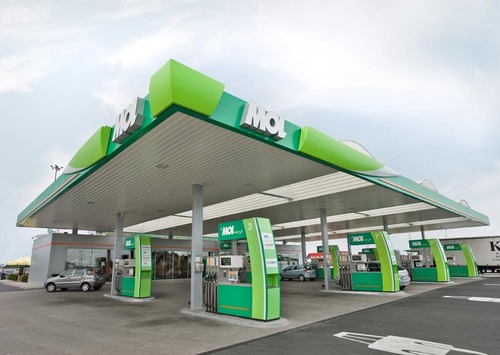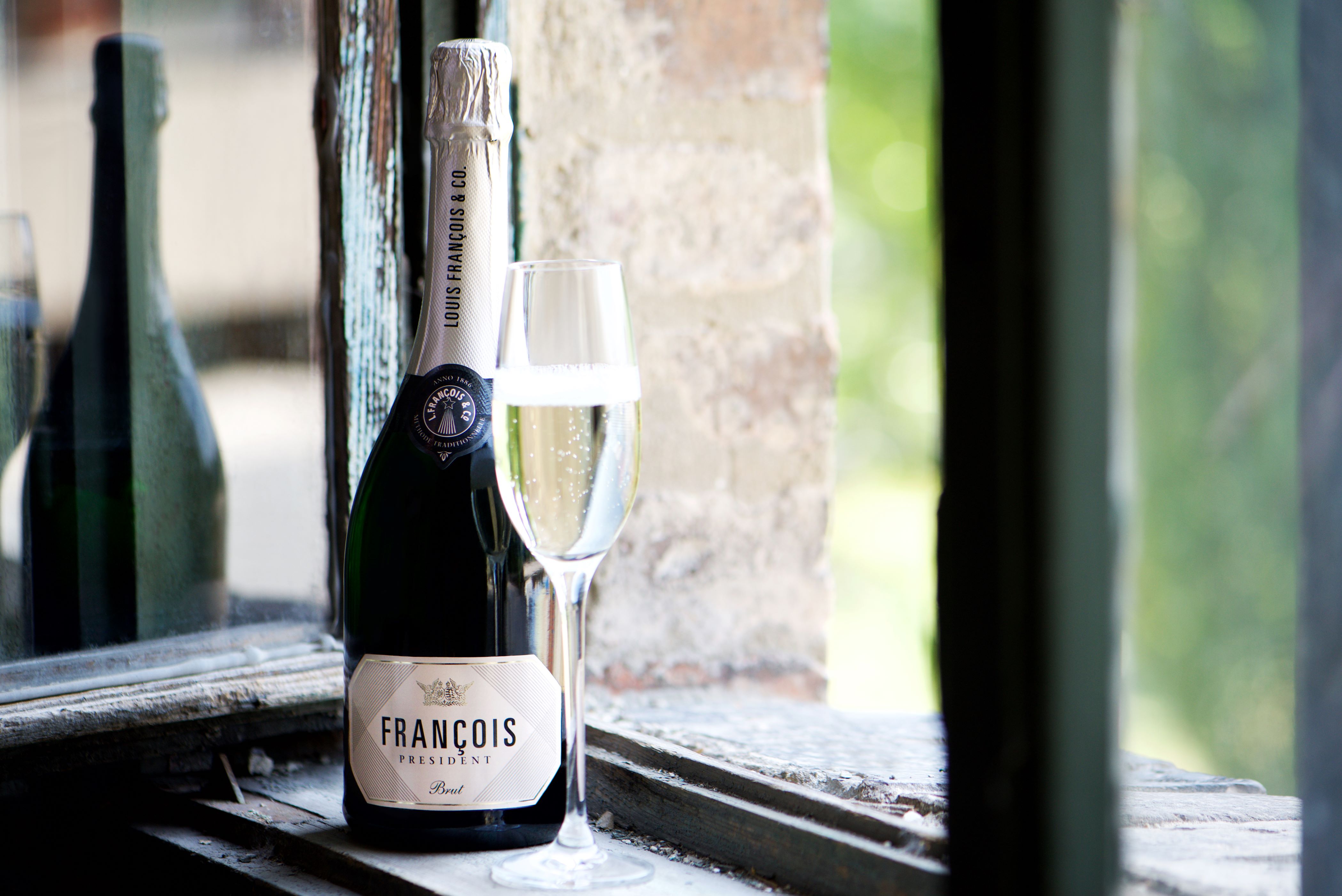Winemaker of the Year and Wines for the Year-end

Mihály Figula, Hungarian Wine Academy Winemaker of the Year 2022.
Photo by Márton Mónus / Hungarian Wine Academy.
Mihály Figula from the Balatonfüred-Csopak wine region saw off intense competition to be voted the Hungarian Wine Academy’s Winemaker of the Year for 2022. Figula has followed in the footsteps of his late father (also Mihály Figula), Winemaker of the Year back in 2000, and built on his work.
Top of Junior’s achievements is showing how the Olaszrizling grape variety can be a fine articulator of terroir and make rich, complex wines that can be every bit as good as the more highly esteemed Furmint, for example. Figula has done this with a number of spontaneously fermented single-vineyard bottlings that have helped raise the profile of what, for many, was considered a journeyman of a grape variety.
Among these wines, Sáfránkert Olaszrizling has the warmest character, coming from 37-year-old vines from Csopak’s Sáfránykert vineyard, which is located between Csopak and Paloznak and is the closest site to Lake Balaton (just 800 meters away), capturing reflected rays from the lake. You can feel the warmth of the lake in the wine.
“Lake Balaton reflects back the sun, and unlike most other lakes in the winemaking world, the comparative shallowness of the water creates a warming and not a cooling effect,” says Figula’s brother János, who is in charge of the vineyards. The siblings take all the essential winemaking and grape-growing decisions together.
The 2021 Sáfránkert Olaszrizling was spontaneously fermented in stainless steel tank and then aged in 25-year-old 10-hectoliter barrels. The result is a ripe, tropical, round, and full-bodied take on this pan-Central European grape. It is a wonderful wine for cold winter days as it can transport one back to summer at Balaton with its warm character. The 2021 vintage costs HUF 4,950 from Bortársaság.
The other single vineyard wine available from 2021 is from the cooler, further inland Sóskút vineyard, from 50-year-old vines that grow right under a limestone quarry. This is from Figula’s most northerly vineyard, with no reflection back from the lake. This medium-bodied wine is delightfully zesty with crisp citrus fruit, an oily texture, and salty minerality. Salty by nature and salty by name: sóskút means “salt well” in Hungarian. It costs HUF 3,990 from Bortársaság.
Vintners’ Who’s Who
It’s always hard to single out a single winemaker above all others. Still, the award by the Hungarian Wine Academy provides a chance to evaluate the work of certain individual vintners. While it’s easy to be cynical regarding the selection of certain winners, a glance at the list of past title holders does give credit where it’s due. Nor does it just focus on the most esteemed regions.
The other finalists this year were Tamás Günzer (Villány), József Lamport of the Thummerer winery in the Eger wine region, Zsolt Liptai of Pannonhalmi Főapátság (the Pannonhalma Archabbey) and Csaba Vesztergombi from Szekszárd, who have all been making excellent wines.
Incidentally, Vilmos Thummerer, who passed away at the age of 78 on December 21, 2021, after a long illness, was named Winemaker of the Year in 1995, as well as the posthumous winner of the Winemakers’ Winemaker for 2022 (Borászok Borásza). Thummerer long worked in close conjunction with the skillful and dedicated Lamport.
A fine festive wine from Thummerer is Egri Kadarka Grand Superior 2015, which tasted great at the Pannon Karácsony (Christmas) tasting held on December 13. It was made from grapes picked on September 29 in a nicely shriveled state, with some botrytis, and has a pale tawny color, with complex notes of tobacco, strawberry jelly, and sun-dried tomato, and elegant fine-grained tannins. It costs HUF 5,460 from wineloverswebshop.hu.
Kadarka, which was pretty much all grubbed up in Eger during the communist years due to it being challenging to work with, is making quite a comeback in the northeastern region. A wine like this certainly justifies Kadarka being referred to as the “Hungarian Pinot Noir.”
Meanwhile, Tokaji Aszú, a contender as the best botrytized sweet wine in the world, is indeed the ideal wine for Advent, but it need not only be for Christmas! Once opened, the wine won’t spoil for weeks, allowing for sparing seasonal sipping; just a small glass of this sweet yet structured and layered wine is packed with intensity and taste sensations.
Unique Winemaking
Made from a centuries-old process (yet boosted and made fresher by modern technology), Tokaji Aszú is unique compared to the other botrytized sweet wines of the world. Here, the shriveled grapes are picked one by one in several sweeps of the vineyard and steeped in a base wine made of regular “healthy” late-harvest grapes that have not been hit by botrytis (the so-called “noble rot”).
Thanks to the tingling acidity of the Furmint grape, the sweetness is often cut through. I personally prefer five puttonyos Tokaji Aszú, which generally has a tauter balance between acidity and sugar, than the more luscious six puttonyos.
Sweet szamorodni is a great, slightly fruitier, and cheaper alternative to Tokaji aszú and is typically aged for less time. Szamorodni is actually a Polish word and reflects Poland’s significant connection with Tokaj in times past when the Polish royal court highly prized the wine.
Szamorodni is usually loosely translated as “as it comes,” meaning that botrytized grapes and regular grapes are picked together and vinified without selecting out the aszú berries. That said, Tomasz Prange-Barczynski, a Polish wine writer, once told me that it, in fact, means “as it’s born.”
For a ‘dry’ festive treat from Tokaj, the rarely made dry szamorodni can be sensationally complex when made well. French winemaker Samuel Tinon’s winery in the village of Olaszliszka has achieved considerable success with this almost-forgotten style of Tokaj wine.
Dry szamorodni should be fermented to dry under a layer of yeast. It requires extensive aging to capture the full spectrum of aromas and flavors, including tobacco, dried apricot, walnuts and blue cheese. Tinon says that the alcohol drops a couple of degrees during aging due to the cellar’s humidity, temperature and ventilation. The minimum alcohol at bottling must be above or equal to 12% by volume in all szamorodni, dry or sweet.
France’s Vin Jaune, from the Jura, is perhaps the closest international comparison. Dry Szamorodni is just the wine to sip in the cold of winter, and Tinon’s is good as it gets. His 2004 vintage costs HUF 6,950 from www.csakajobor.hu. It is so good that his other wines are often (and wrongly) overlooked. “I came to Tokaj to make aszú,” he quips.
This article was first published in the Budapest Business Journal print issue of December 16, 2022.
SUPPORT THE BUDAPEST BUSINESS JOURNAL
Producing journalism that is worthy of the name is a costly business. For 27 years, the publishers, editors and reporters of the Budapest Business Journal have striven to bring you business news that works, information that you can trust, that is factual, accurate and presented without fear or favor.
Newspaper organizations across the globe have struggled to find a business model that allows them to continue to excel, without compromising their ability to perform. Most recently, some have experimented with the idea of involving their most important stakeholders, their readers.
We would like to offer that same opportunity to our readers. We would like to invite you to help us deliver the quality business journalism you require. Hit our Support the BBJ button and you can choose the how much and how often you send us your contributions.








